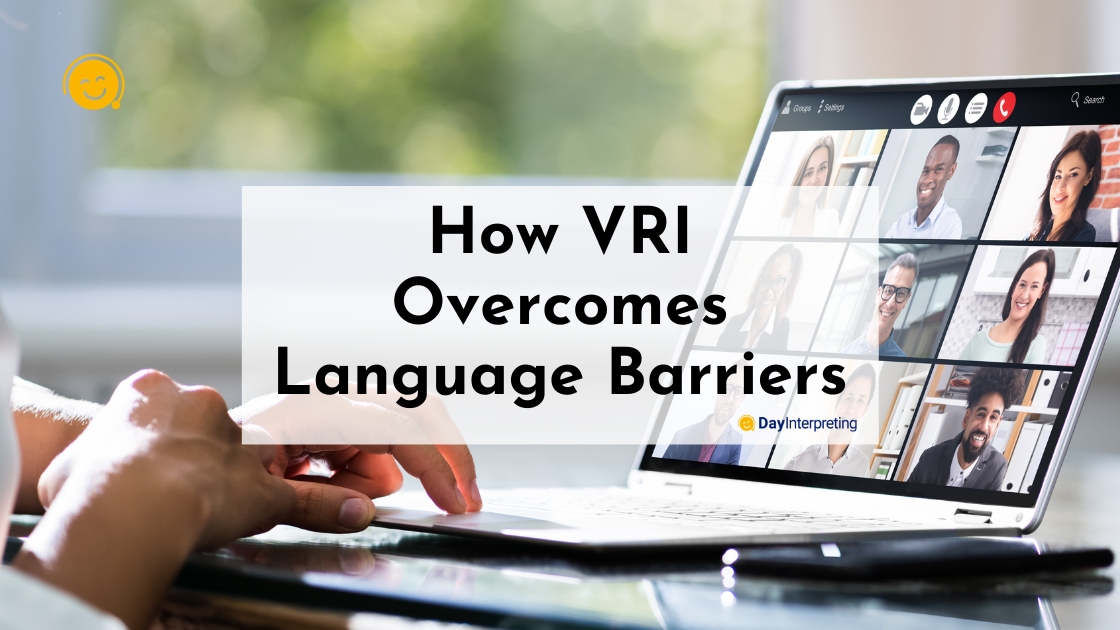Communication is key. How many times have you heard that message? It’s something that’s imprinted in all of us, yet many still overlook a common communication barrier: language! Causing misunderstandings and misinterpretations, language barriers often have a far more significant impact than we realize. In fact, language barriers are challenging for everyone involved. But there is an effective and practical solution that can overcome this problem: VRI. But do you know how VRI overcomes language barriers? Here’s the scoop!
How VRI Overcomes Language Barriers
VRI (Video Remote Interpreting) is a telecommunication service. It uses tools like web cameras or videophones to provide spoken or sign language interpreting services. Due to the pandemic, the need for VRI increased substantially. And the trend isn’t predicted to simmer down any time soon as remote interpreting emerges as the most appropriate interpreting modality for global communication.
Whether you’ve just started to explore the possibilities that VRI brings to the table, or you’ve experienced an uptick in demand for remote interpreting, it may be helpful to understand the benefits that this service offers and how it can help overcome language barriers!
VRI and Emotional Reactions
We’ve all been in situations where someone tried to communicate with us in a foreign language. And the frustration of not understanding what was being said caused a shift in your emotions. Although it might have been something small, like directions to the gas station, that feeling isn’t something that sits well with anyone.
Now, take that feeling, and imagine meeting with a potential client that doesn’t speak your language. Or a customer that’s deaf or hard of hearing. Try to look at the situation from their perspective. They’d be combatting a range of emotions before, during, and after the meeting. And if it’s a high-stress situation, like a healthcare visit, things get even more intense.
The fact of the matter is that human communication always brings out emotions. Some positive, some negative. And unaddressed language barriers can magnify negative emotions. If you don’t offer your customers language solutions that cater to limited English proficiency (LEP) or deaf or hard of hearing needs, it can easily trigger emotional responses that further complicate communication and decrease customer satisfaction. When this happens, we refer to the situation as an emotional barrier.
The Impact of Emotional Barriers
Whenever emotional barriers are in play, it can trigger a range of reactions in your customers, including avoiding further communication and turning to your competitors who might be more prepared to meet their language needs.
Regardless of whether you’re in the retail sector or run a healthcare facility, your customers are always your top priority, and it’s your responsibility to cater to their needs, build trust, and show them that you care. Providing your LEP customers with language solutions like video remote interpreting is one of the first and foremost steps you can take to tear down emotional barriers and overcome the language barrier.
What Are the Benefits of VRI?
Quick Access
VRI allows you to provide effective and efficient language services for spoken languages and sign language whenever the need arises. When the need for interpreting is urgent, VRI offers an instant solution.
Visual Support
The visual support associated with VRI ensures that communication is always as accurate as possible. Since VRI covers spoken and sign language, it also promotes inclusivity for everyone.
Cost-Effective
VRI fills the gap between over-the-phone interpreting and in-person interpreting services. There’s usually a minimum charge associated with on-site interpreting, plus you’ll have to cover mileage and travel charges. But with VRI, you can optimize your interpreting budget while gaining the additional benefit of visual support.
Ready to Break Language and Emotional Barriers with VRI?
Video remote interpreting services eliminate the need for on-site interpreters and offer the flexibility of remote interpreting sessions that allow your LEP and deaf or hard of hearing customers to better communicate and connect with your brand.
Since VRI is done via video, it’s one of the best remote interpreting solutions because the human element is always present. It also allows everyone to witness the speaker’s body language and facial expressions, which form the foundations of effective communication.
To learn more about our innovative VRI services, get in touch with the team at Day Interpreting right now. You can also explore our range of other interpreting solutions and browse our blog for relevant and insightful interpreting tips and tricks.





0 Comments